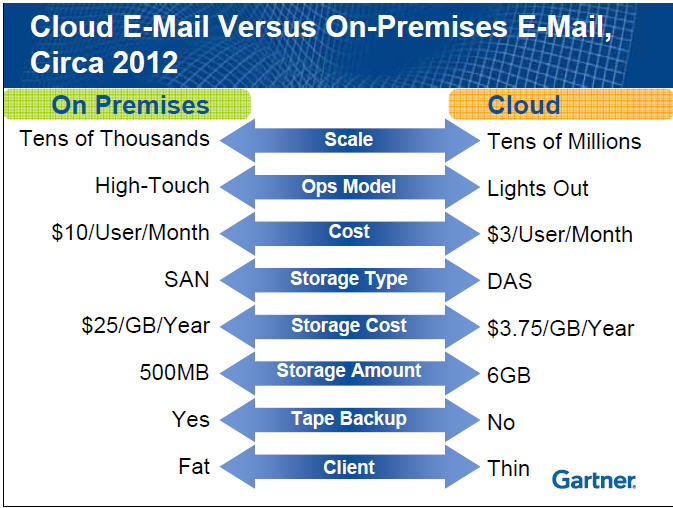How to know when to send your email to the cloud

Email will ultimately move to the cloud/software as a service model, but the math may not add up for larger companies. How do you know when to make the jump?
Gartner analysts Matthew Cain and James Lundy went through the cloud vs. on-premise email conundrum, but what really made the presentation was a series of charts that serve as decision grids for making a move.
I've talked to a bunch of IT executives at the Gartner IT Symposium in Orlando and many of them were at least pondering moving email to the cloud. Gartner reckons that 20 percent of email seats will have a SaaS or cloud model by 2012. In addition, smaller companies will lead the cloud email charge, but large enterprises will tag along. Bottom line: Cloud email costs will be 50 percent less than their on-premise counterparts in 2012.
Here's the comparison:
Lundy and Cain said that email will move to the cloud for the following reasons:
- Hosted models can deliver significant economies of scale. Most organizations don't scale past tens of thousands of users, while hosts will ultimately provide services for millions of users.
- Browser-based email will lower costs.
- Storage will be cheaper for cloud email providers.
- And the offline access problem will be solved. Gartner expects hosts like Microsoft and Google to offer offline email access in a browser with a 30-day cache.
Nevertheless, cloud email won't be for everybody. Enter the second useful chart from Lundy and Cain.
The big takeaway is that you have to consider cloud-based email in long-term planning. The challenge is that there are multiple players. Gartner also expects that Cisco will enter the hosted email game to join Google, Microsoft, IBM and a bevy of others.
